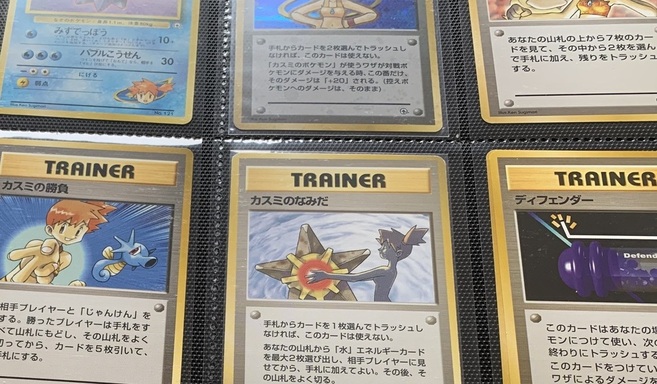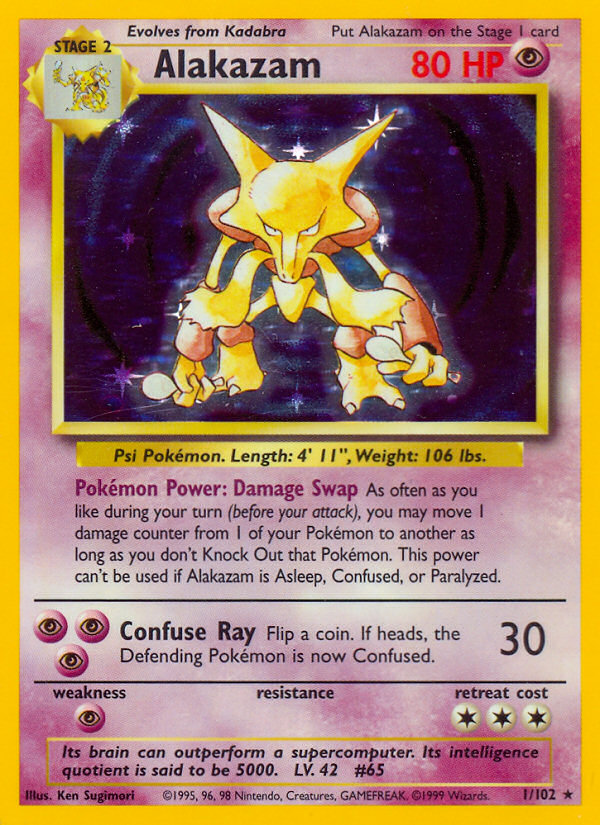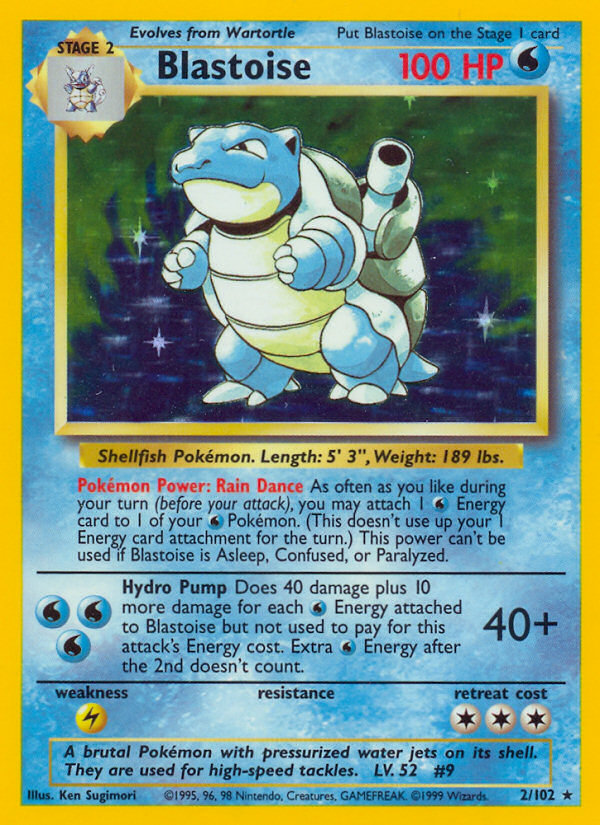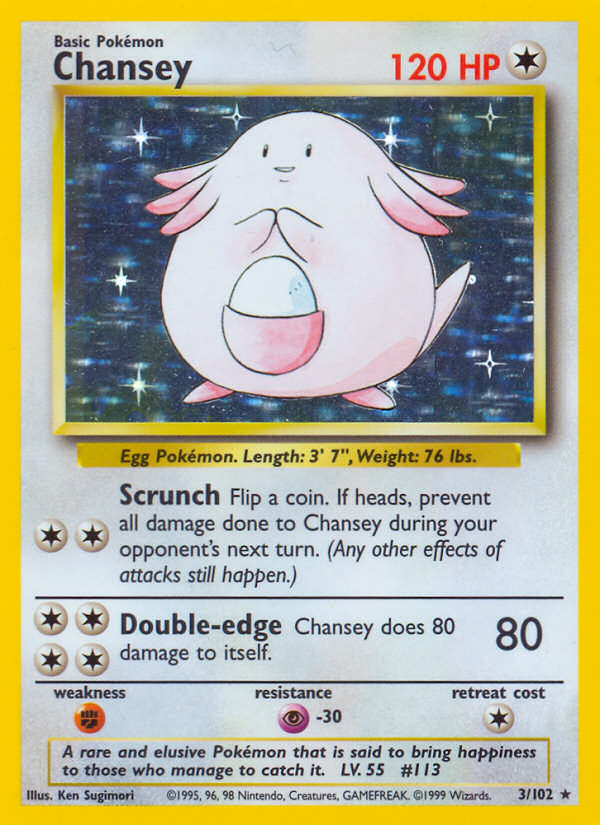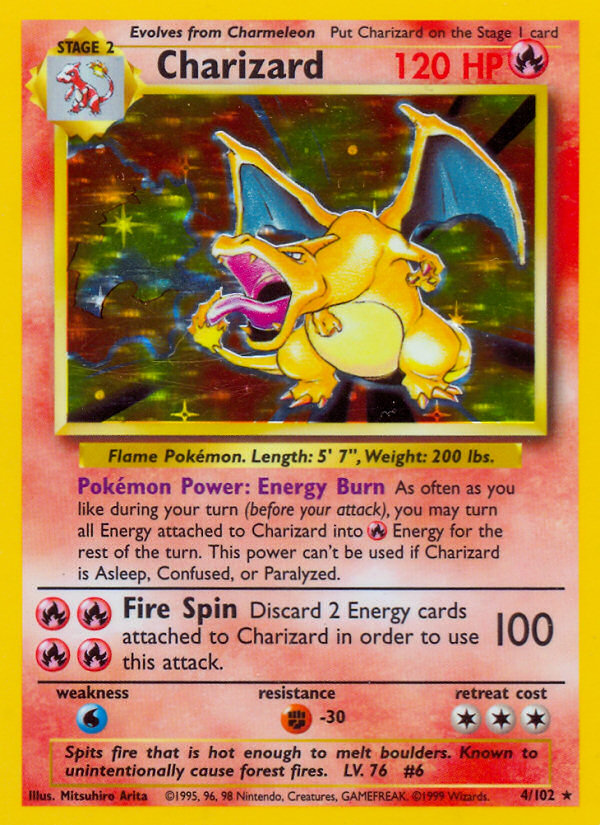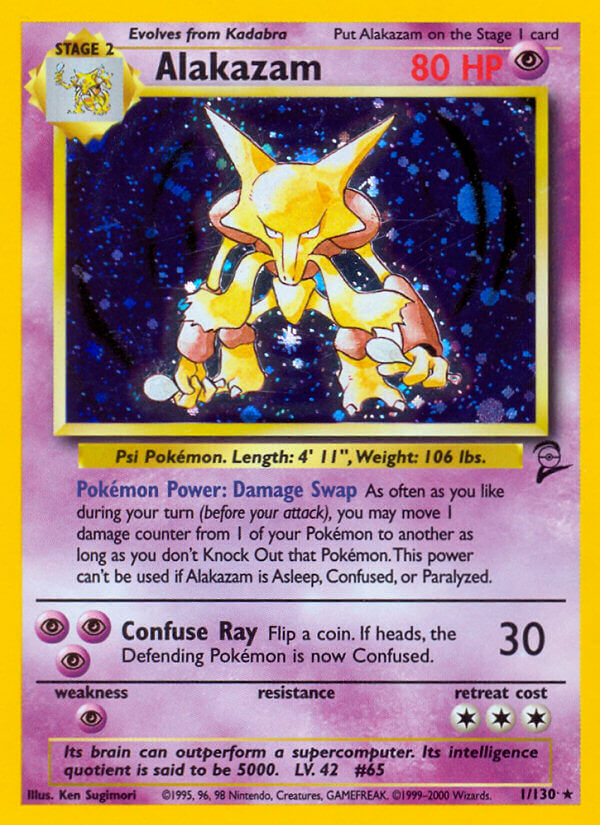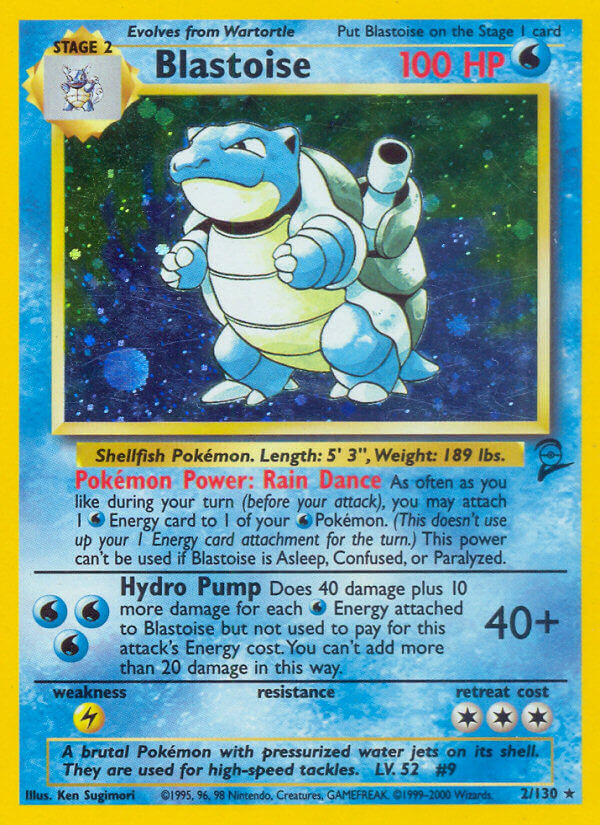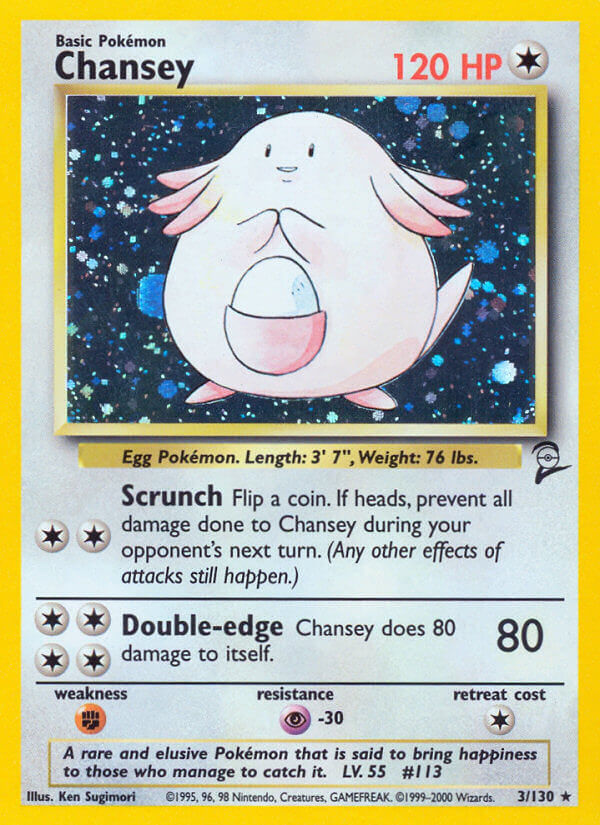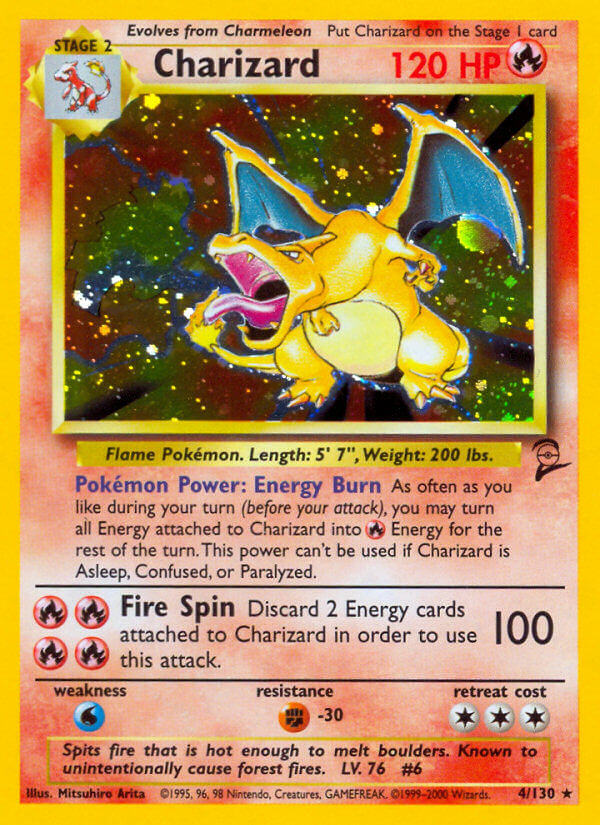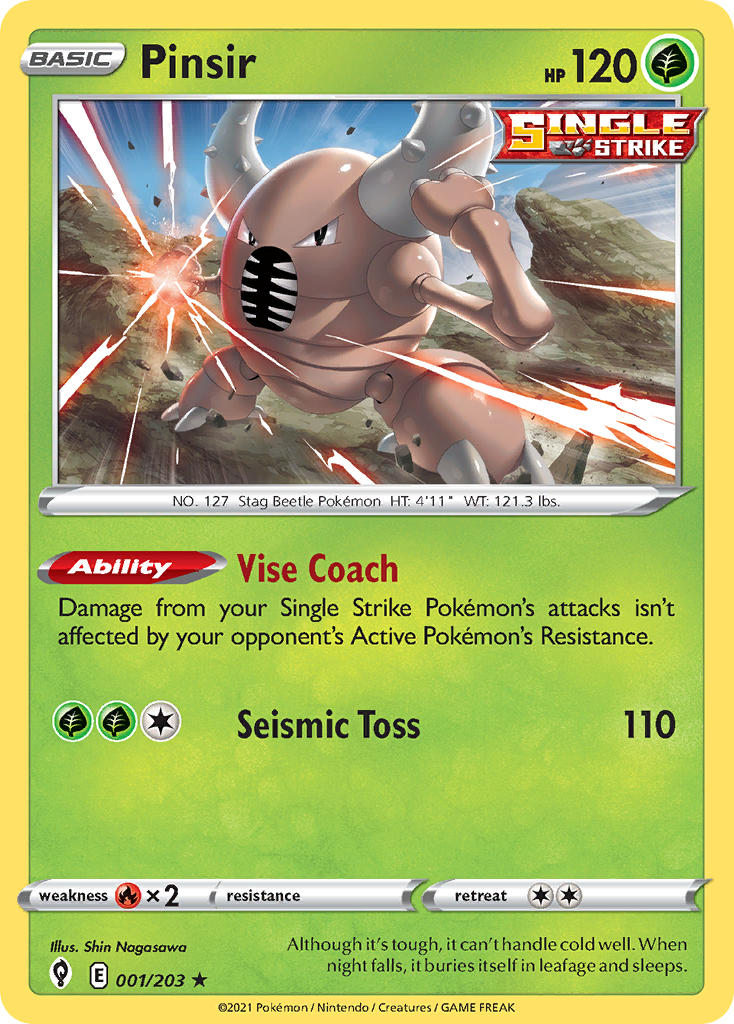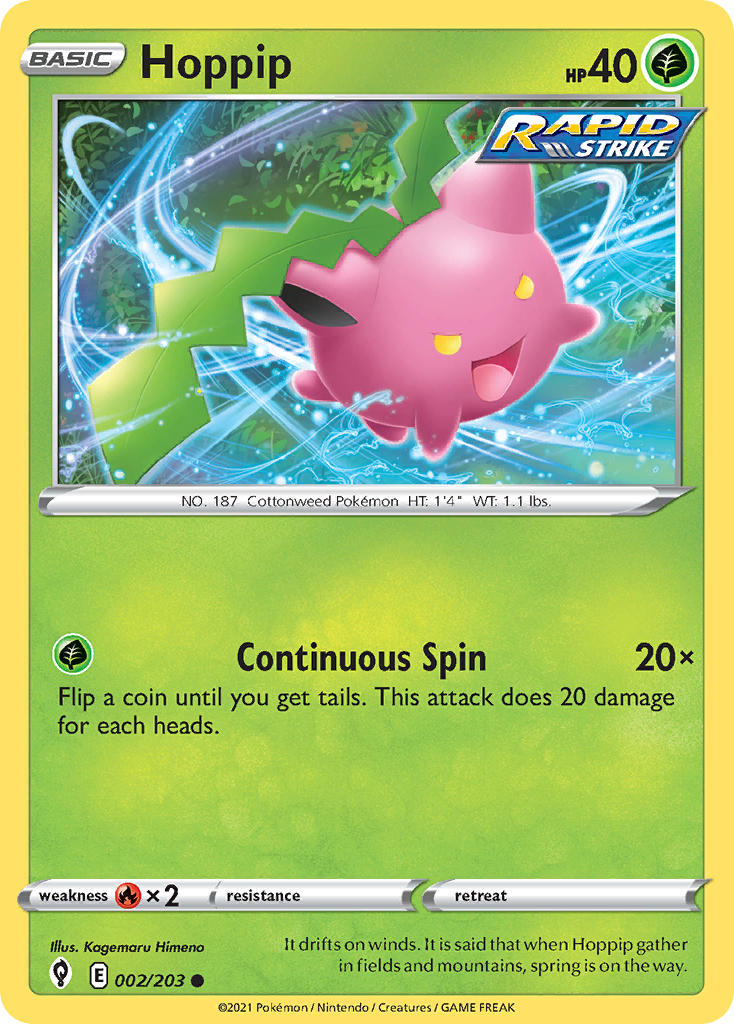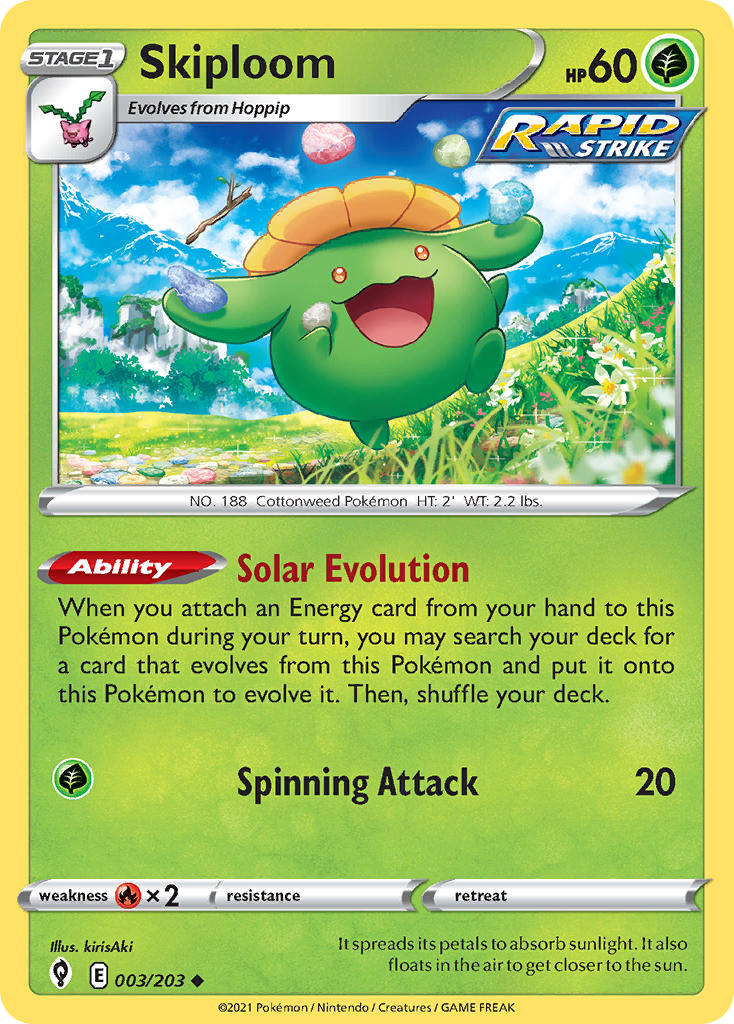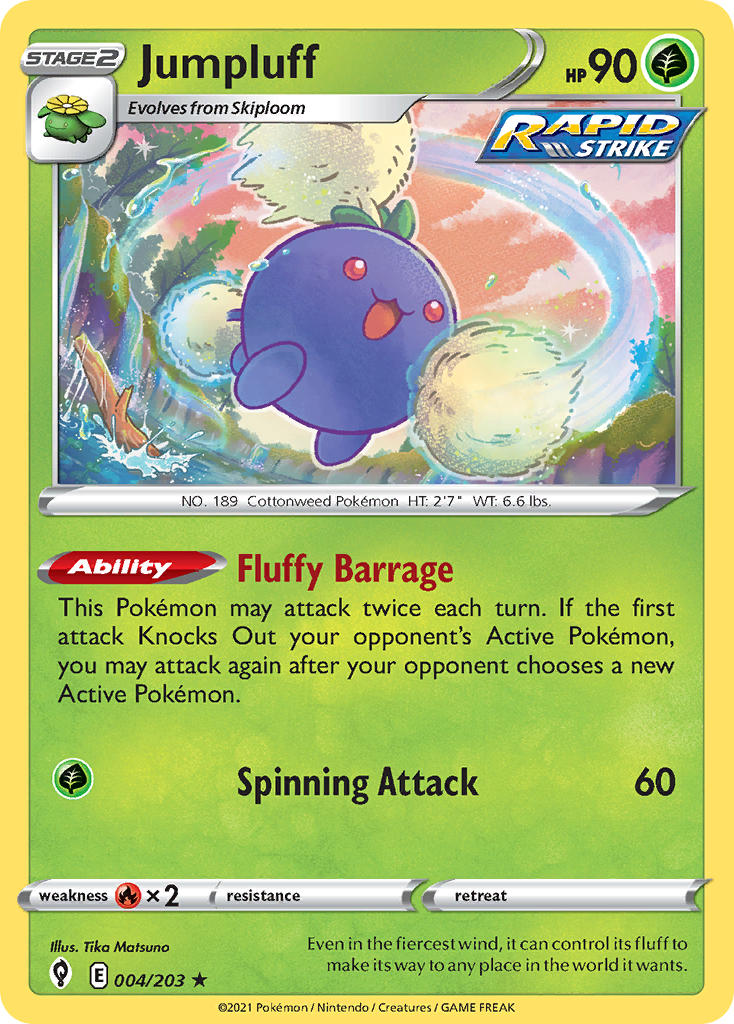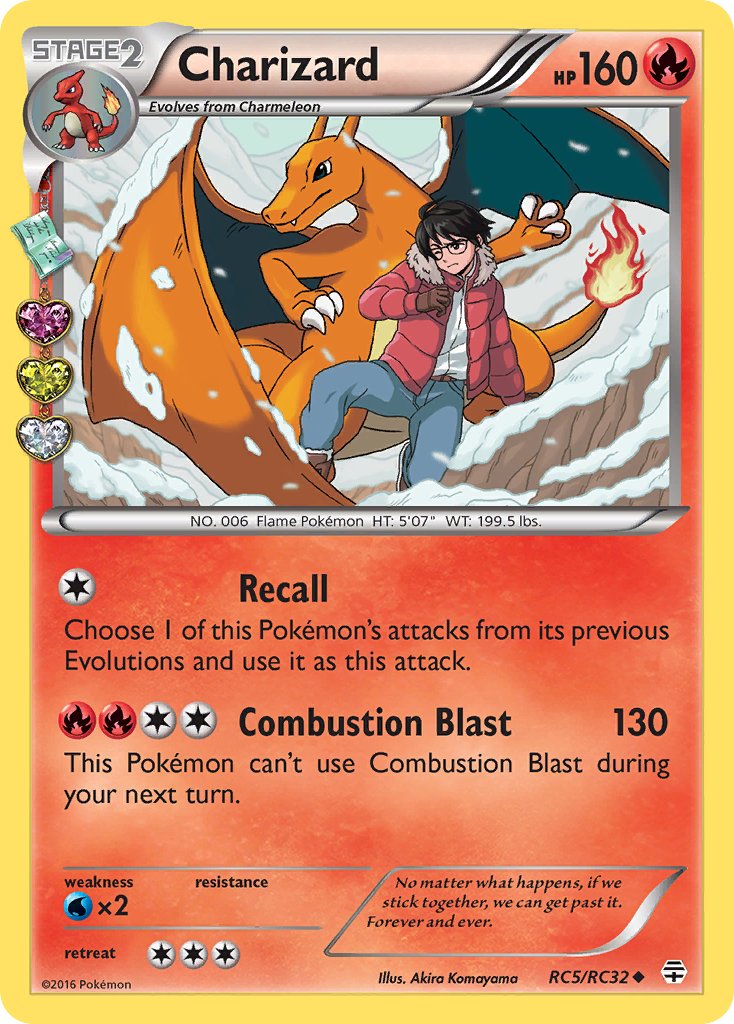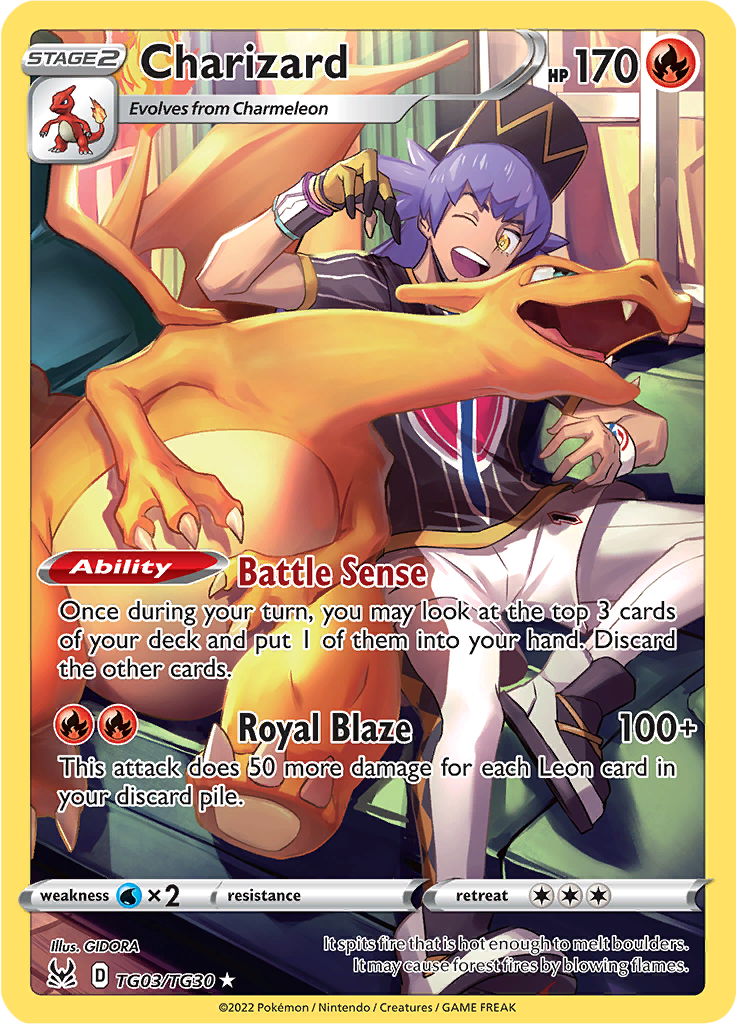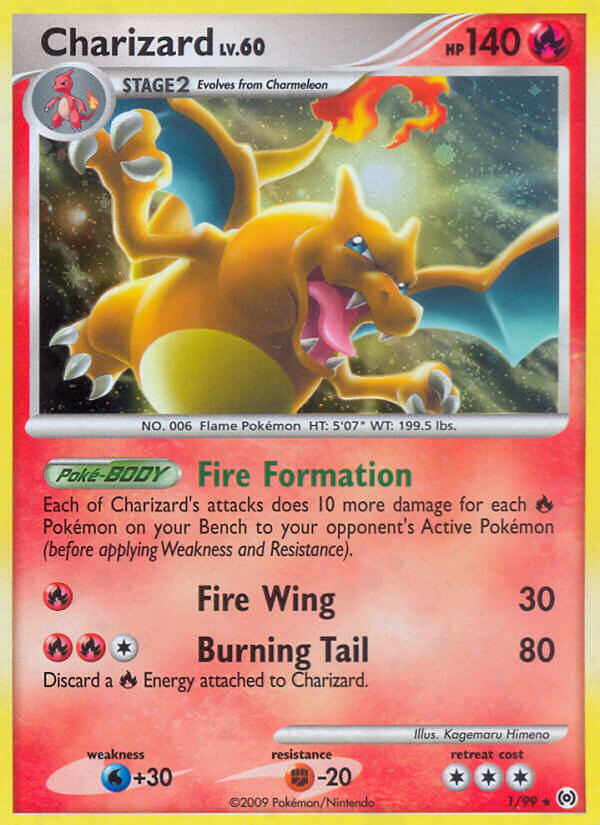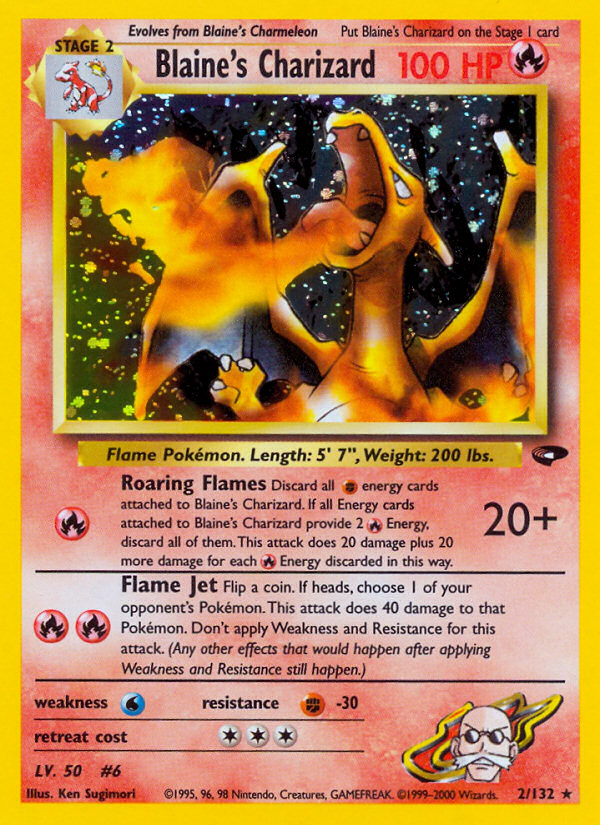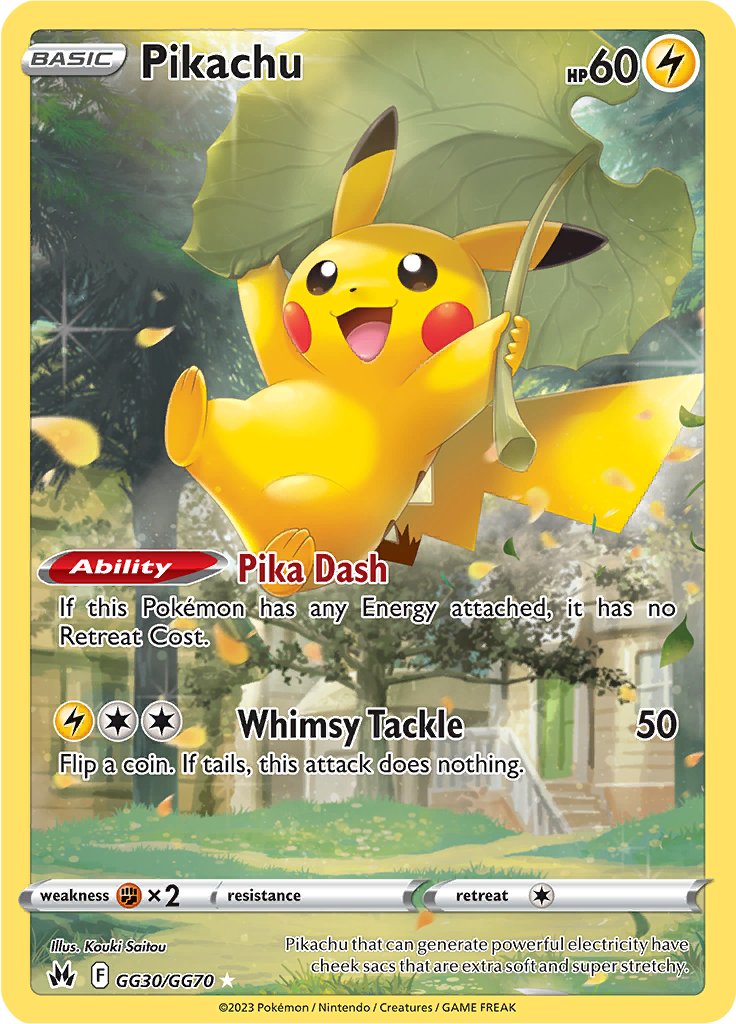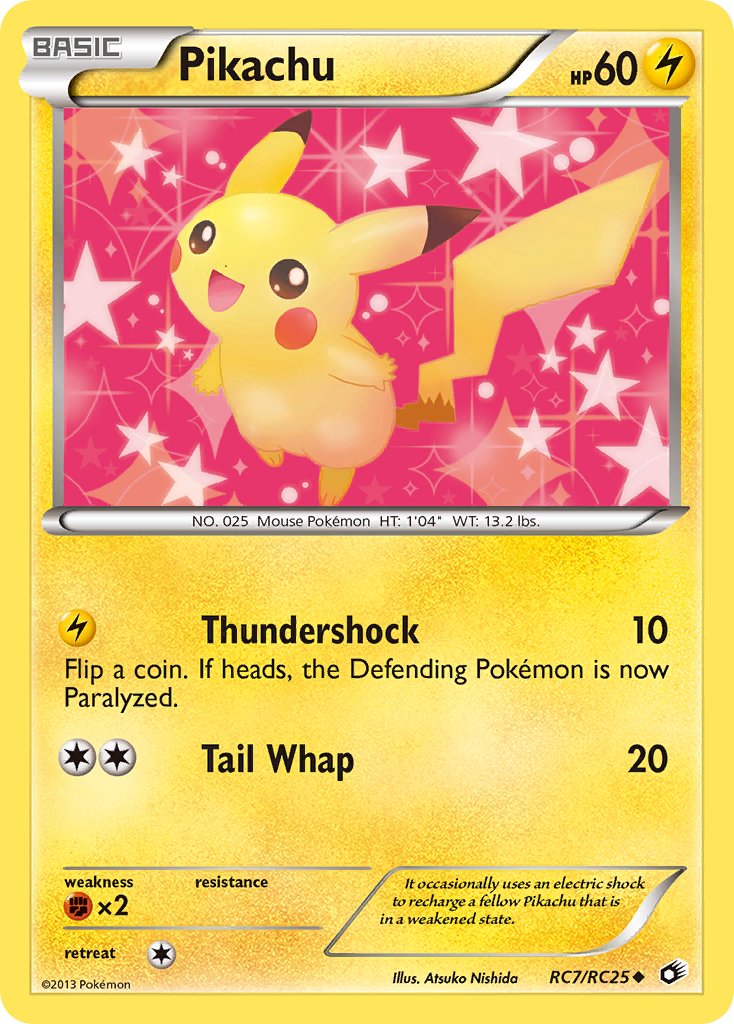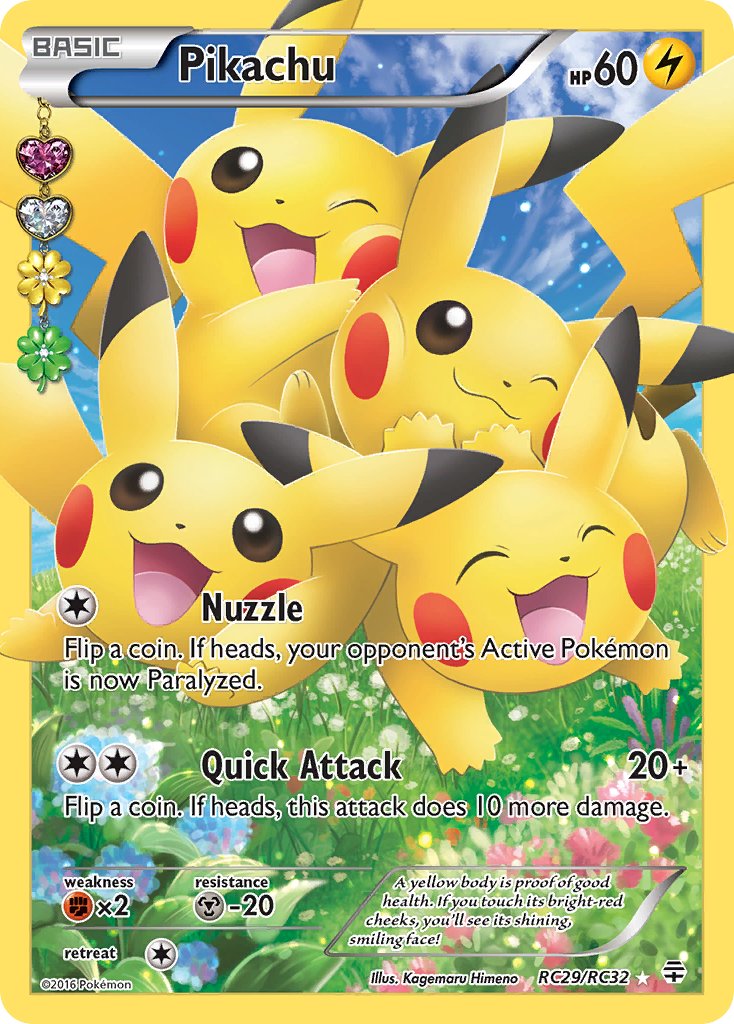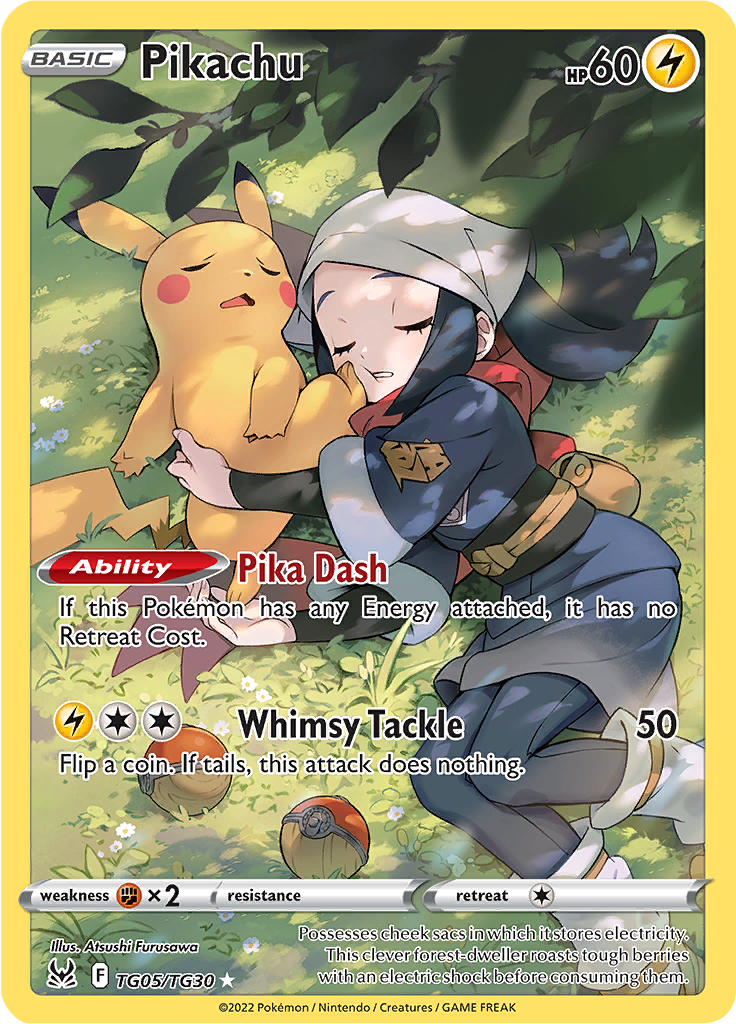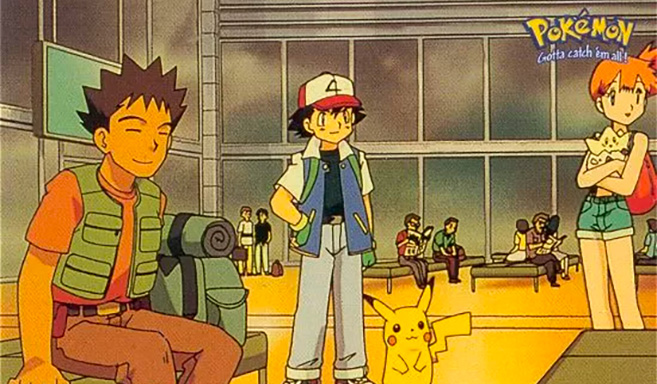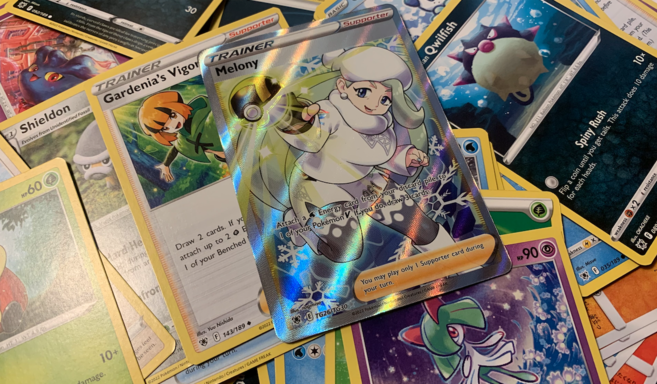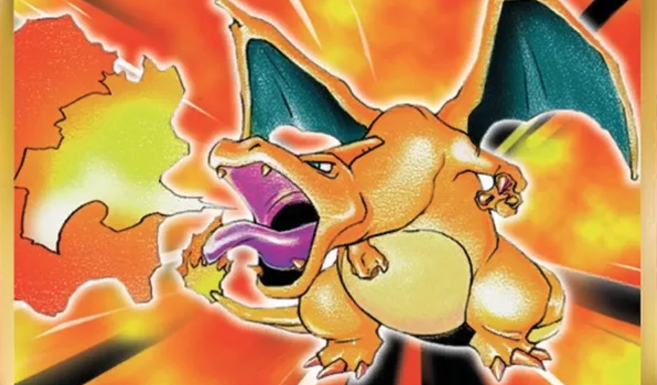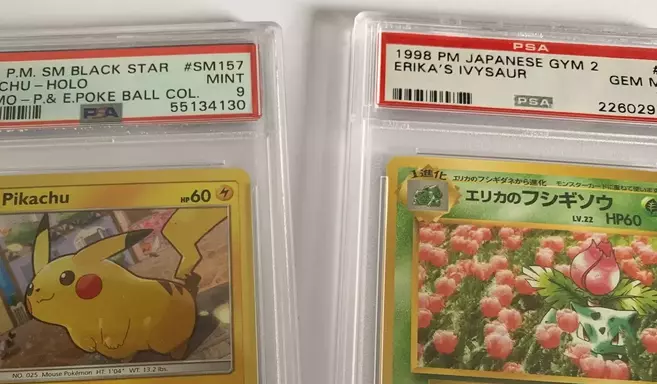Introduction to the Pokémon Card Craze
Pokémon card collecting has experienced a renaissance, captivating both long-time enthusiasts and newcomers. This fascinating hobby combines unique characters, striking art, and a competitive gaming scene. Our guide will help you navigate the exciting world of Pokémon card collecting, offering valuable insights and practical tips to enhance your experience.
1. A Short History of Pokémon Cards
The Pokémon Trading Card Game (TCG) was first introduced in 1996 by the Japanese company Media Factory, inspired by the popular Pokémon video games developed by Game Freak. The video games, which debuted in 1996 with Pokémon Red and Green in Japan, and Pokémon Red and Blue in North America, laid the foundation for the TCG by introducing a world filled with captivating creatures known as Pokémon.
Early Beginnings
The first set of Pokémon cards, known as the Base Set, was released in Japan in October 1996, featuring 102 cards. In January 1999, the Base Set made its way to North America, where it quickly gained widespread popularity. The set introduced iconic Pokémon such as Pikachu, Charizard, and Blastoise, along with various Trainer and Energy cards necessary for gameplay.
The Base Set featured several rarities of cards, including Common, Uncommon, Rare, and Holographic Rare. The highly sought-after holographic Charizard card from this set remains one of the most valuable and iconic Pokémon cards to this day.
Expansions and Growth
Since the release of the Base Set, the Pokémon TCG has seen numerous expansions and special sets, totaling over 100 to date. These expansions typically introduce new Pokémon, gameplay mechanics, and card types, such as the introduction of the Dark and Steel types in the Neo Genesis expansion or the appearance of Pokémon-ex cards in the EX Ruby & Sapphire expansion.
Notable expansions include the Jungle and Fossil sets, which were the first expansions released in both Japan and North America, and the Base Set 2, which was a compilation of cards from the Base Set, Jungle, and Fossil sets.
Special Sets and Collaborations
Over the years, the Pokémon TCG has also released special sets and collaborated with renowned artists and brands. In 2021, the Pokémon TCG celebrated its 25th anniversary with the release of the Celebrations expansion, which featured reprints of iconic cards from the game’s history, as well as new cards showcasing popular Pokémon from various generations.
Global Impact
The Pokémon TCG has truly become a global phenomenon, with millions of fans worldwide enjoying the game and collecting cards. It has been translated into multiple languages, including English, French, German, Italian, Spanish, Portuguese, Korean, and Chinese.
In addition to its commercial success, the Pokémon TCG has fostered a strong community of players who participate in local and international tournaments, culminating in the annual Pokémon World Championships.
From its humble beginnings as a spin-off of a popular video game series to its transformation into a multi-billion-dollar industry, the Pokémon Trading Card Game has captured the hearts and imaginations of fans around the globe. Its rich history, diverse array of cards, and thriving community ensure that the Pokémon TCG will continue to excite and entertain collectors and players for years to come.
2. Decoding Card Rarity and Worth
Pokémon cards have captivated collectors for decades, with their worth being influenced by varying degrees of rarity. Several factors contribute to a card’s rarity, ultimately impacting its value in the collector’s market. Key factors that affect rarity include the card’s edition, production volume, unique features like holographic art, and, in some cases, misprints or promotional status.
Edition
A card’s edition signifies its release timeline in the Pokémon Trading Card Game. For instance, first edition cards (indicated by a small “1” symbol on the card) are considered more valuable than subsequent editions, as they are rarer and often represent the original print run of a set. Collectors also seek out cards from older or discontinued sets, such as the Base Set, Jungle, and Fossil, which tend to have increased value due to their age and scarcity.
Production Volume
Cards with lower production volumes are more challenging to find and thus hold higher value. For example, certain cards, like “shiny” Pokémon or secret rares, are printed in much lower quantities than common or uncommon cards, making them more valuable to collectors.
Unique Features
Some cards have unique attributes, like holographic or full-art designs, which can increase their value. Holographic cards, also known as “holo” or “foil” cards, feature a reflective, metallic finish on the card’s artwork. Full-art cards, on the other hand, have an extended illustration that covers the entire card, making them visually appealing and sought after by collectors.
Misprints and Promotional Cards
Occasionally, misprinted cards, which contain errors in text, colors, or artwork, find their way into circulation. While some collectors may view these cards as undesirable, others consider them valuable due to their uncommon nature. Similarly, promotional cards, which are often distributed through special events or product releases, can fetch a higher price due to their limited availability.
To accurately evaluate a card’s worth, collectors often consult various online resources, such as price guides, auction websites, and trading forums. Price guides, like TCGplayer and Beckett, provide up-to-date information on card values based on recent sales data. Auction websites, such as eBay, offer insights into current market trends and the prices that collectors are willing to pay. Trading forums, like Reddit’s r/pkmntcgtrades and the Price Guide on Pokemonsite.com, are helpful for gathering opinions from fellow collectors and staying informed about fluctuations in card values.
Signed Cards
Signed Pokemon cards are highly sought after by collectors and fans alike. These cards feature the autograph of a Pokemon artist or designer, adding a unique and personal touch to the already valuable collectible. The signature is often located on the front of the card, typically near the artwork of the Pokemon featured. Signed Pokemon cards can be obtained through various means, such as attending events where the artists are present or purchasing them from reputable sellers. The value of a signed card can vary depending on the popularity of the artist, the rarity of the card, and the condition of the signature itself. Some collectors prefer to keep these cards in their original packaging to preserve their condition and value.
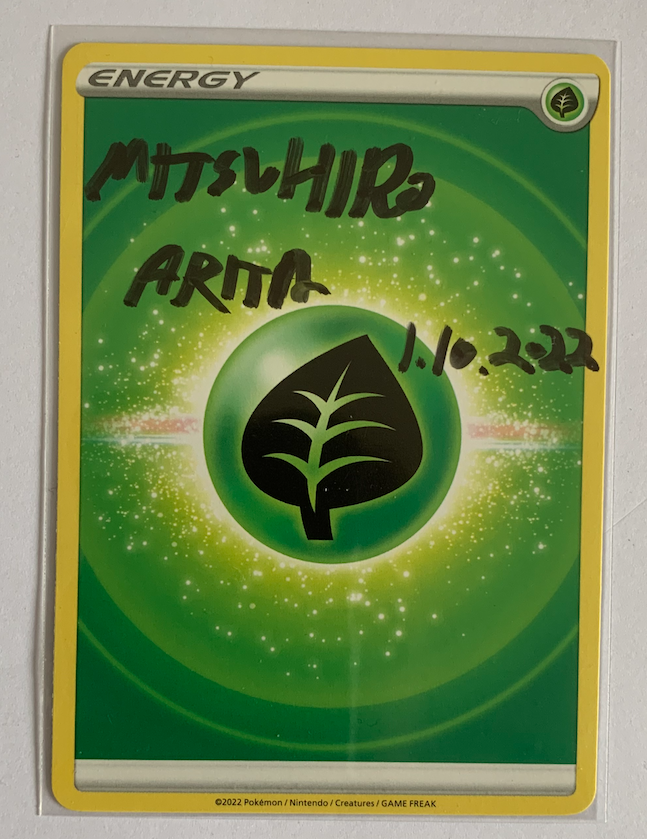
For many Pokemon fans, owning a signed card is a way to connect with the creators of the franchise and show their appreciation for their work. These cards serve as a unique and personalized piece of Pokemon history that can be cherished for years to come.
3. Starting Your Collection: What to Know
Entering the world of Pokémon card collecting can be an exciting and rewarding hobby. To ensure a smooth start, it is essential to understand the basics of card types, sets, and purchasing options. Below are some key aspects to consider when beginning your collection journey.
Understanding Card Types and Sets
Pokémon cards are classified into various types, each serving a different purpose in the Trading Card Game. Familiarize yourself with the following card categories:
- Pokémon Cards: These cards depict various Pokémon species, with each card showcasing a unique creature and its abilities.
- Trainer Cards: These cards represent the items, supporters, and stadiums used by Pokémon trainers during battles.
- Energy Cards: Essential for gameplay, these cards provide the energy needed for Pokémon to use their attacks.
In addition to card types, understanding the different sets available in the Pokémon Trading Card Game is crucial. Sets are groups of cards released together, often focusing on a specific theme or featuring new mechanics. Some popular sets include:
- Base Set: The original Pokémon card set, released in 1999, featuring iconic cards like the holographic Charizard.
- Hidden Fates: A popular set known for its “shiny” Pokémon cards and sought-after cards like the Shiny Charizard-GX.
- Evolving Skies: A recent set featuring Eevee’s various evolutions and the powerful Rayquaza VMAX.
Identifying Your Collecting Goals
Before purchasing cards, determine what you want to achieve with your collection. Some collectors focus on completing sets, while others aim to acquire cards featuring their favorite Pokémon or specific card types, such as full-art or holographic cards. Identifying your collecting goals will help you focus your efforts and resources.
Purchasing Options
Once you have a clear understanding of card types and sets, explore the different purchasing options to jumpstart your collection:
- Booster Packs: These packs contain a random assortment of cards from a specific set, providing an element of surprise and the potential to pull rare cards.
- Theme Decks: Pre-constructed decks typically contain 60 cards, built around a central theme or Pokémon. They offer a great starting point for new collectors and players alike.
- Individual Cards: Purchasing specific cards from local game stores, online retailers, or fellow collectors can be a targeted approach to building your collection.
Engaging with the Community
Connecting with fellow collectors and players is a valuable way to learn about collecting, trading, and playing the Pokémon Trading Card Game. Local game stores often host tournaments and events, while online forums and social media groups provide platforms for discussion, advice, and networking with other enthusiasts.
In summary, starting a Pokémon card collection involves familiarizing yourself with card types, sets, collecting goals, and purchasing options. By engaging with the collector’s community and staying informed, you can build a collection that brings you joy and satisfaction.
4. Essential Tips for Preserving Your Collection
Protecting and preserving your Pokémon cards is essential for maintaining their value, visual appeal, and longevity. By following a few simple guidelines, you can ensure that your collection remains in excellent condition for years to come.
Use Protective Sleeves
Invest in high-quality protective sleeves to shield your cards from damage. These sleeves not only prevent scratches, dirt, and fingerprints but also offer an additional layer of protection when using binders or top-loader cases. Some popular sleeve brands include Ultra PRO, Dragon Shield, and KMC.
Organize with Binders and Pages
Binders are an excellent way to store and display your collection while keeping the cards safe from external factors. Use plastic pocket pages designed specifically for trading cards, and ensure they are made from archival-safe, acid-free materials to prevent damage over time. When inserting cards into the binder pages, double-sleeve them by using protective sleeves for added security.
Utilize Top-Loader Cases
For your most valuable or cherished cards, consider using top-loader cases, which are rigid plastic cases that provide extra protection against bending, warping, and impact damage. Place the card in a protective sleeve first, then insert it into the top-loader for optimal protection.
Handle Cards with Care
Always handle your cards with clean hands, as dirt, oils, and other contaminants can damage the card surface over time. Hold the cards by the edges to avoid touching the card face, and be mindful of potential hazards like liquids or sharp objects that could harm your cards.
Store Cards Properly
Store your collection in a cool, dry place, away from direct sunlight, humidity, and extreme temperatures. These factors can cause discoloration, warping, or fading, negatively impacting the card’s condition and value. Consider using storage boxes made specifically for trading cards or designate a dedicated shelf or cabinet to store your binders and top-loaders.
Regularly Assess and Maintain
Periodically assess the condition of your cards and their storage materials. Replace damaged sleeves, binder pages, or top-loaders as needed, and ensure that the storage environment remains consistent and suitable for preserving your collection.
By following these essential tips, you can keep your Pokémon card collection in pristine condition and safeguard its value and longevity. Proper care and maintenance not only protect your investment but also enhance the overall enjoyment of your hobby.
5. Trading and Selling Pokémon Cards
Trading and selling Pokémon cards is an integral part of the hobby, as it enables collectors to acquire desired cards, complete sets, or monetize their collection. To ensure a smooth and successful transaction, it is crucial to understand the market value of the cards involved and practice fair trading and selling principles.
Research Card Values
Before trading or selling cards, research their current market value to ensure fair and accurate pricing. Consult online price guides like TCGplayer and Beckett, or browse auction websites such as eBay to gauge the prices collectors are willing to pay. Keep in mind that card values fluctuate based on factors like rarity, condition, and demand. For instance, the value of a first edition holographic Charizard card from the Base Set can range from hundreds to thousands of dollars, depending on its condition.
Assess Card Condition
The condition of a card plays a significant role in determining its value. A card in “Near Mint” or “Mint” condition will generally command a higher price than one with visible wear or damage. Familiarize yourself with grading scales used by companies like PSA (Professional Sports Authenticator) or Beckett Grading Services to better understand the condition of your cards and their impact on value.
Establish Trust and Fairness
When trading or selling cards, ensure both parties are satisfied with the transaction. Establish open communication, provide clear descriptions and photos of the cards, and be willing to negotiate if necessary. Trading and selling within your local community or online forums can help build trust and long-lasting connections with fellow collectors.
Trading Options
Trading cards can be done in person at local game stores, tournaments, or meetups, as well as online through forums, social media groups, or websites dedicated to trading Pokémon cards. Examples of online trading platforms include Reddit’s r/pkmntcgtrades and the Virbank City Facebook group. Always exercise caution when trading online, and consider using tracking services or trade referees for added security.
Selling Options
Selling your cards can be accomplished through various channels:
- Local game stores: Some stores buy and sell Pokémon cards, offering store credit or cash for your collection.
- Online auction websites like eBay provide an extensive audience of potential buyers and allow you to set a starting price or use a “Buy It Now” option.
- Online marketplaces: Websites such as TCGplayer and Cardmarket cater specifically to the trading card community and provide a platform for selling individual cards or entire collections.
- Social media groups and forums: Engage with fellow collectors on platforms like Facebook, Reddit, or Discord to find potential buyers within the community.
Trading and selling Pokémon cards requires a solid understanding of card values, condition, and various trading and selling channels. By ensuring transparent and fair transactions, collectors can successfully acquire desired cards or profit from their collection while building trust and connections within the Pokémon card community.
6. Importance of Pokémon Card Grading
Card grading is an essential aspect of the Pokémon card collecting hobby, as it offers an objective assessment of a card’s condition and authenticity by professional grading services. A numerical grade is assigned to the card, which helps establish its market value. Higher grades often correspond to increased value, making grading a worthwhile investment for high-value cards or cards with potential future value.
Professional Grading Services
Reputable grading services, such as PSA (Professional Sports Authenticator) and Beckett Grading Services (BGS), use a consistent set of criteria and grading scales to evaluate trading cards. Their experts assess various factors, including centering, corners, edges, and surface quality, to determine the card’s overall condition.
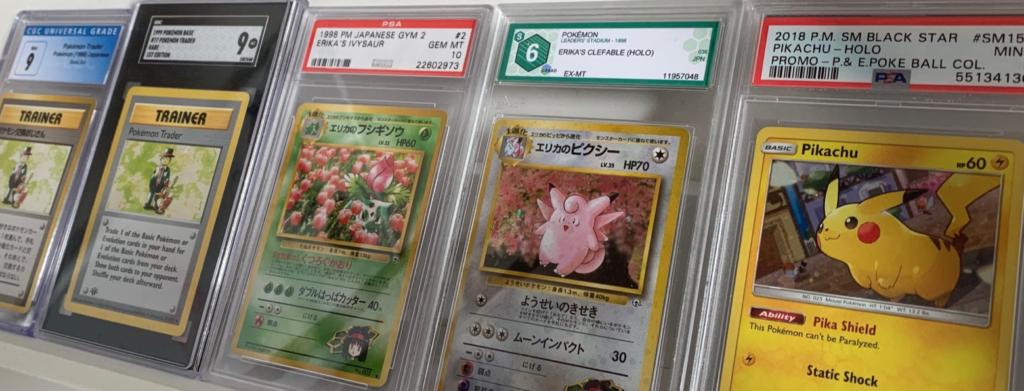
Grading Scales
Different grading services use their grading scales, with PSA employing a 1-10 scale and BGS using a half-point scale ranging from 1-10. For example, a PSA 10 represents a “Gem Mint” card with virtually no flaws, while a BGS 9.5 is considered a “Gem Mint” card with only minute imperfections. Understanding these grading scales can help collectors determine the condition and value of graded cards.
Increased Value with Grading
A card that receives a high grade from a professional grading service often sees a significant increase in value compared to a similar ungraded card. For instance, a first edition holographic Charizard card from the Base Set may sell for a few hundred dollars in ungraded or raw condition. However, if the same card receives a PSA 10 grade, its value can skyrocket to tens of thousands of dollars. Grading adds a level of credibility and assurance for potential buyers, as they can trust the card’s condition and authenticity.
Grading as an Investment
For high-value cards, grading can be a wise investment to maximize the card’s potential value in the market. Cards that may benefit from grading include rare, high-demand cards like first edition holographic cards, “shiny” Pokémon, or unique cards such as misprints or promotional cards. Grading these cards can significantly boost their market value and make them more attractive to serious collectors.
Encapsulation and Authentication
In addition to assigning a grade, professional grading services encapsulate the card in a tamper-evident, sealed case to protect it from damage and maintain its condition. The case also features a label with essential information about the card, including the card’s name, set, grade, and a unique identification number. This process ensures that the card’s authenticity is verified, further increasing its value and appeal to potential buyers.
In summary, Pokémon card grading is an essential aspect of the collecting hobby, providing an objective assessment of a card’s condition, authenticity, and value. High grades can significantly increase a card’s market value, making grading a worthwhile investment for rare or high-demand cards. Understanding the grading process, scales, and benefits can help collectors make informed decisions about their collections and potential investments.
If you want to know more about Grading Pokemon cards, please read our article How to Grade your Pokemon cards?
7. Pokémon Cards in the Competitive Scene
The Pokémon Trading Card Game (TCG) combines the excitement of collecting with the strategic depth of a competitive card game. Players build unique decks with various card combinations, aiming to defeat opponents in thrilling and tactical battles. The competitive Pokémon TCG scene offers diverse opportunities for players of all skill levels to participate, develop their skills, and even earn rewards.
Deck Building and Strategy
A well-constructed deck is vital for success in the Pokémon TCG. Players must carefully choose a combination of Pokémon, Trainer, and Energy cards to create a balanced and synergistic deck. Popular strategies include:
- Type-based decks: Focusing on a specific Pokémon type, such as Water or Fire, to capitalize on type advantages and weaknesses.
- Archetype decks: Building a deck around a central theme or mechanic, like “tag team” decks featuring powerful Tag Team-GX cards.
- Meta decks: Decks designed to counter the current popular or dominant decks in the competitive scene, often adapting to shifts in the metagame.
Casual and Organized Play
The Pokémon TCG community offers various opportunities for casual and organized play. Local game stores and community centers often host weekly meetups, leagues, or casual tournaments. These events provide a friendly environment for players to practice, socialize, and improve their skills.
Competitive Tournaments
For more experienced players, the Pokémon TCG competitive scene hosts several tournaments, ranging from local events to international championships. Some examples include:
- Premier Challenges and Midseason Showdowns: Entry-level events that offer Championship Points (CP), which players accumulate to qualify for larger competitions.
- Regional Championships: Large-scale events held in various locations, offering substantial Championship Points, cash prizes, and other rewards.
- International Championships: Major events held in different regions, such as North America, Europe, and Oceania, with significant cash prizes and Championship Points up for grabs.
- Pokémon World Championships: The pinnacle of competitive Pokémon TCG, featuring top players from around the globe competing for the title of World Champion and substantial cash prizes.
Play! Pokémon Program
The Play! Pokémon program, managed by The Pokémon Company International, oversees the organization and regulation of Pokémon TCG events. By participating in Play! Pokémon-sanctioned events, players can earn Championship Points, exclusive promo cards, and other rewards. The program also uses a player ranking system, allowing players to track their progress and performance in official events.
The competitive Pokémon TCG scene offers a diverse range of opportunities for players to engage in exciting and strategic battles. From casual play to high-stakes tournaments, players can enjoy the thrill of competition while honing their skills and potentially earning valuable rewards. The combination of collecting and gameplay adds another dimension to the enjoyment of Pokémon cards, making the hobby even more dynamic and captivating.
8. The Joy of Pokémon Card Collecting
Pokémon card collecting is a vibrant and fulfilling hobby that appeals to enthusiasts of all ages and backgrounds. Far beyond the mere acquisition of valuable cards, the joy of collecting lies in the appreciation of the stunning artwork, the thrill of the hunt for that special card, and the camaraderie found within the Pokémon TCG community. Regardless of your experience level, the world of Pokémon cards provides a wealth of enjoyment and gratification.
Appreciating the Artwork
One of the most captivating aspects of Pokémon card collecting is the incredible artwork featured on each card. Renowned artists, such as Ken Sugimori, Arita Mitsuhiro, and Tomokazu Komiya, have contributed to the creation of memorable and iconic card illustrations. The varying art styles, from traditional hand-drawn images to digital renders, showcase the diverse talents of the artists and the unique personalities of the Pokémon themselves. Collecting cards based on their artwork allows fans to appreciate the beauty and craftsmanship that goes into every card.
The Thrill of the Hunt
The excitement of searching for and eventually finding a highly sought-after card is an exhilarating experience for collectors. Whether it’s tracking down a specific card to complete a set or stumbling upon an elusive holographic or Full Art card in a booster pack, the thrill of the hunt keeps collectors engaged and motivated. This sense of achievement and discovery adds an element of excitement and adventure to the hobby.
Diverse Themes and Sets
With numerous Pokémon card sets released over the years, collectors can choose to focus on specific themes, eras, or card types that resonate with them. From the nostalgic Base Set to recent expansions like Sword & Shield, there is a vast array of options for collectors to explore. Some collectors may focus on specific Pokémon species, such as Pikachu or Charizard, while others might prefer to collect cards featuring Legendary or Mythical Pokémon, ensuring a personalized and unique collection.
Engaging with the Community
Pokémon card collecting offers the opportunity to connect with like-minded enthusiasts who share a passion for the hobby. Local game stores, tournaments, online forums, and social media groups provide platforms for collectors to discuss their collections, share their experiences, and offer support and advice. This sense of community fosters lasting friendships and offers collectors the chance to learn from one another and grow within the hobby.
A Sense of Nostalgia
For many collectors, Pokémon cards hold a special place in their hearts, evoking memories of their childhood and early experiences with the franchise. Reconnecting with these memories through card collecting can provide a comforting sense of nostalgia and remind collectors of the magic and wonder they experienced when first discovering the world of Pokémon.
In conclusion, the joy of Pokémon card collecting goes far beyond the potential economic value of the cards. It encompasses the appreciation of beautiful artwork, the excitement of hunting for special cards, the personalization of unique collections, and the camaraderie within the Pokémon TCG community. This multifaceted hobby continues to captivate collectors worldwide, providing endless enjoyment and satisfaction.
9. Conclusion
In summary, collecting Pokémon TCG cards is a rewarding hobby that combines both economic and emotional value. It offers collectors the potential to build a valuable collection, while simultaneously providing a sense of nostalgia and personal fulfillment. The stunning artwork and diverse sets cater to a wide range of interests, while the thrill of the hunt and the competitive scene add excitement and challenge. Engaging with the Pokémon TCG community allows collectors to forge connections and share their passion with like-minded enthusiasts. Ultimately, the multifaceted nature of Pokémon card collecting ensures a captivating and enjoyable experience that appeals to fans of all ages and backgrounds.
10. FAQ
Pokémon cards were first released in 1996 by the Japanese company Media Factory.
A card’s rarity and value are influenced by factors such as edition, production volume, and special features like holographic art. Online resources like price guides, auction websites, and trading forums can help assess a card’s worth.
Familiarize yourself with different card types and sets, decide which cards or themes interest you the most, and visit local game stores or online retailers to purchase booster packs, theme decks, or individual cards.
Use protective sleeves, binders, or top-loader cases to shield your cards from damage. Handle cards with clean hands and store them in a cool, dry place away from direct sunlight.
Card grading is a process where professional grading services evaluate a card’s condition and assign it a numerical grade, which helps determine its value and authenticity.
Yes, trading and selling cards is a significant aspect of the hobby, enabling collectors to acquire specific cards or profit from their collection. Research the current market value of your cards before engaging in trades or sales.
Pokémon card collecting is a multifaceted hobby, offering the enjoyment of beautiful artwork, building a valuable collection, engaging with the Pokémon TCG community, and participating in competitive play.


